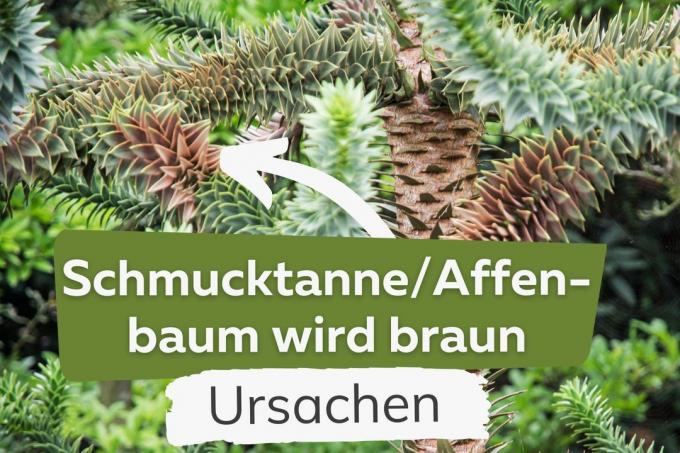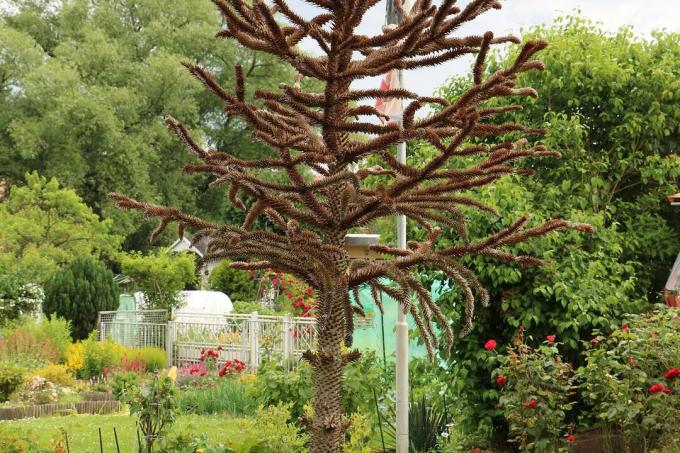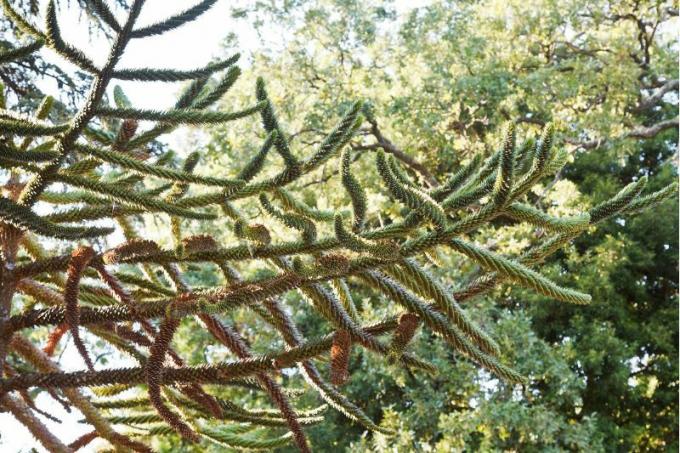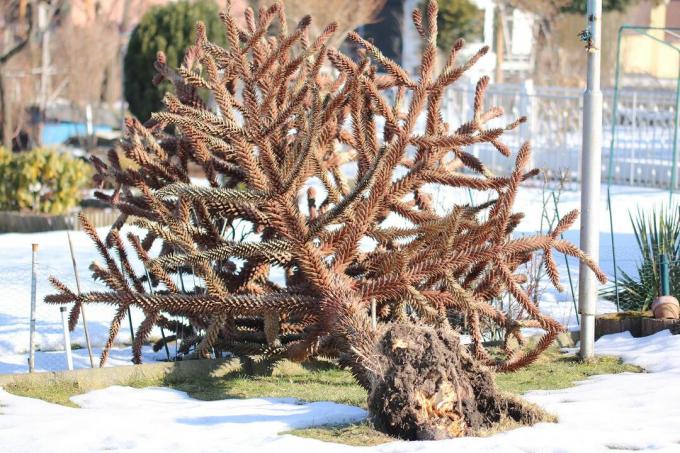
When the needles of the evergreen silver fir turn brown, you need to pay attention, because then there is a problem.
In a nutshell
- brown needles indicate problems with the fir
- common cause wrong location or wrong care
- diseases or pests are also possible
- choose the right location and take care of it properly to prevent it
Table of Contents
- Choose a suitable location
- optimize care
- Diseases
- pests
- Avoid frost damage
- frequently asked Questions
Choose a suitable location
By choosing the right location, you can do a lot to ensure that the ornamental fir or monkey tree (Araucaria araucana) called, does not turn brown. It requires a place with the following properties:
- sunny to semi-shady
- sheltered from the wind
- with permeable, not too heavy soil
- as deep as possible
- with little or no lime

If the ornamental fir turns brown shortly after planting, it is therefore necessary to check the location. In very young specimens, it is possible to implement them again. It becomes more difficult when the site conditions of old trees are changed, for example because more sun suddenly hits the tree due to the removal of other larger trees.
A notice: If the needles turn reddish brown in a few places on the tree, this could indicate sunburn, then the tree should get more shade.
optimize care
Basically, you can't do much wrong when caring for the monkey tree, since it only reacts really sensitively to one thing and that is waterlogging. Of course, young specimens should not dry out, but it is important not to water the tree until the top layer of soil has dried a little. Older trees only need to be watered during a long drought, but then thoroughly. Their taproots can fetch water from great depths.
It's not easy to tell if the needles are turning brown because it's too dry or too wet. The following clues can help:
- Tree is turning brown from top to bottom and outside in, soil dry: it could be due to drought
- Tree turning brown from bottom to top and inside out, soil damp or wet: waterlogging may be present

Diseases
Actually, the ornamental fir is very robust and rarely gets sick or attacked by pests. The situation is different if the tree is weakened by other circumstances. fungal diseases can occur, for example, if the fir is already affected by waterlogging. Since the fungus is then in the wood, antifungal agents can do almost nothing against it. It may help if the affected branches are removed, but if the trunk is affected, the fir will die.
A notice: A fungal disease can be recognized by dark discolorations in the cuts in the wood.
pests
Pests are often not visible to the naked eye. Either because they are too small or because they are in the wood. There is a suspicion of pest infestation, for example, if individual parts of the fir turn brown, these should then be cut out. Beetle infestation can be recognized by small boreholes in the bark. If you remove the bark, you can see the burrows of the inside beetle larvae Find. If the trunk is affected, the fir can no longer be saved. In the case of branches, it depends on how far the feeding tunnels reach. You can then cut back the branches. However, this only applies as long as the fir is still small. Pests can no longer be controlled in the upper crown area of old trees.
Avoid frost damage

True, the ornamental fir frost hardy, but young plants in particular are sensitive to frost. It helps to wrap the lower part of the plant in fleece or at least mulch the soil around the trunk. A greater danger than the frost itself frost drought. The tree cannot absorb water through the roots due to the ground frost and dries up. Especially when the sun is shining in winter and it is very cold, it is important to water the tree with lukewarm water.
frequently asked Questions
This is very difficult to do as the plants form deep taproots and generally do not respond well to a change of location.
The branches can be removed, but the wounds will remain. Normally no new shoots develop at the interface. If it is only parts of branches, then these should be cut back into healthy wood.
It is important to choose the right location and to care for the fir according to its needs. This is also the only way to prevent diseases and pests.


